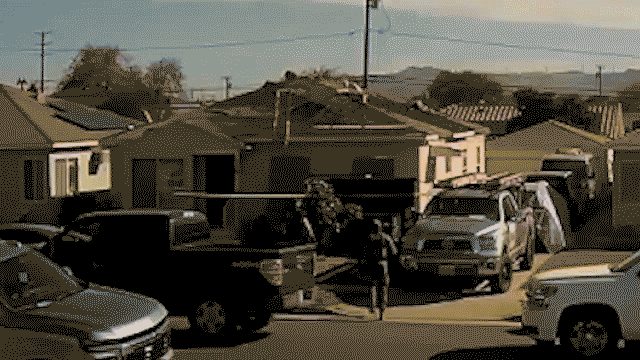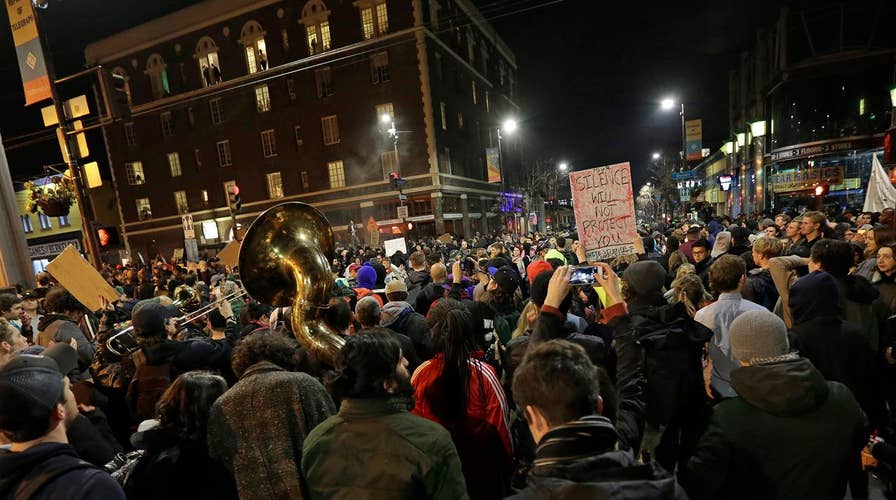University of California, Berkeley police defended its decision to take a hands-off approach in its effort to handle the riot that took place on campus last week ahead of Breitbart editor Milo Yiannopoulos’ speech to Republicans at the school.
VIDEO: MILO SPEAKS OUT AFTER BERKELEY SPEECH IS SHUT DOWN
A group of about 150 rioters overtook peaceful protesters and used metal rods, Molotov cocktails and commercial-grade fireworks to destroy parts of downtown Berkeley while police largely stood to the side. Raging fires were also set on campus. The damaged total about $100,000 and only one person was arrested.
Berkeley police Sgt. Sabrina Reich said officers feared increased violence and more serious injuries if the violence escalated accompanied by a heavier-handed police response. Investigators are reviewing extensive video taken during the protest and more arrests are possible, she said.
PROTESTS, PEPPER SPRAY, ARRESTS AT NYU AS CONSERVATIVE SPEAKER STOPS BY
Several officers did fire paint-ball like guns to mark rioters for detention and their possible arrest, she said. But if officers had made more arrests at the scene, up to three officers would have had to give up crowd control duty to escort each suspected rioter to jail, Reich said.
"It was a crowd-control situation," Reich said. "We steered clear of individual action."
Berkeley campus police had never encountered so-called Black Bloc tactics before the protest, Reich said, "something we'll have to prepare for and address going forward." The tactics were employed by mask-wearing rioters dressed head-to-toe in dark clothing and using crude weapons to vandalize property.
More mayhem and serious injuries could have happened if police had mounted an aggressive crackdown, said Berkeley spokesman Dan Mogulof, who called the protest unprecedented for the campus.
“We have never seen this on the Berkeley campus,” Mogulof told the Los Angeles Times of the Black Bloc tactics. “This was an unprecedented invasion.”
John Bakhit, a lawyer for the union representing about 400 of the system’s police officers said the school’s “'hands-off' approach was to the citizens' detriment and the officers' detriment in this situation.”
Officers should have been given more discretion to prevent the vandalism and violence and make arrests at the Berkeley protest, Bakhit said.
"The frustrating thing for the police officers is that they weren't allowed to do their jobs," he added.
Campus security and free speech rights experts said it is difficult for officers to keep the peace at protests while ensuring free speech is guaranteed.
"It can be tough," said Robert Shibley, executive director of the Philadelphia-based Foundation for Individual Rights in Education. "Campus police need to be as restrained as possible while still getting the job done."
The University of California system adopted its current crowd control polices after officers at Berkeley and the University of California, Davis, came under blistering national criticism in 2011 for their tactics.
That November, baton-wielding Berkeley police beat students erecting tents on campus and arrested more than 20 during the Occupy demonstrations against corruption, greed and the divide between rich and poor. Davis campus police were seen on video using pepper spray on students nonviolently participating in the Occupy rallies.
The Associated Press contributed to this report.










































